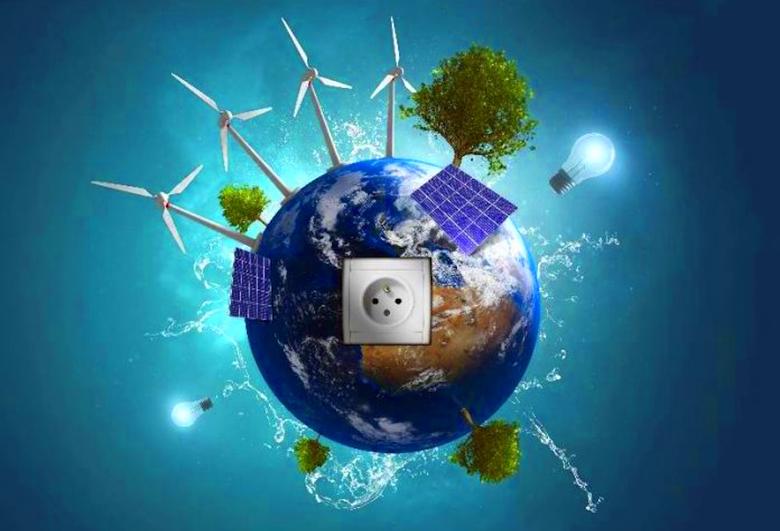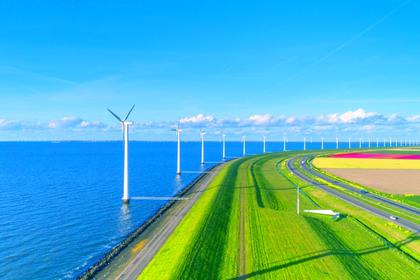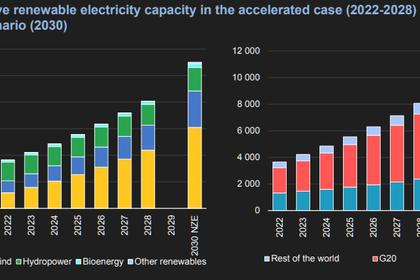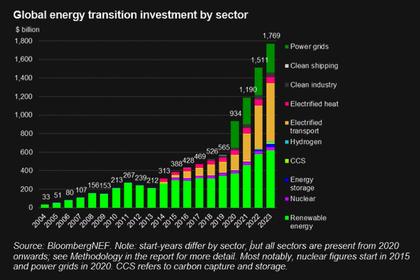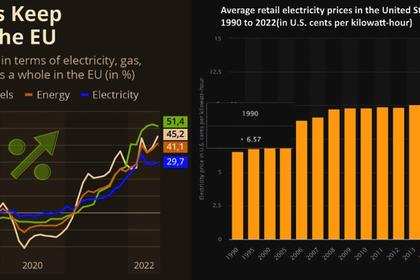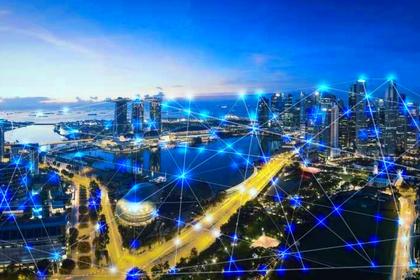Traditionally, power grids were designed for one-way electricity flow from large and centralized power plants to consumers. However, the increasing integration of renewable energy sources, such as solar and wind and other decentralized energy resources, necessitates a more dynamic and flexible grid infrastructure. This new paradigm demands sophisticated digital solutions that can effectively manage complex electricity flows, predict and respond to demand fluctuations, and ensure grid stability, providing a reassuring adaptability to the grid and ensuring a stable and reliable energy future.
The transformation of electricity generation is not the only significant change in the power grid landscape. Consumption patterns have also evolved, with the electrification of the transport sector being a prime example. The introduction of EV charging infrastructure has revolutionized the operation of electricity distribution grids. Previously, there was no need for various loads to communicate with the grid nor for loads to interact with each other. Now, all these elements must be seamlessly integrated, a task that is only possible by a digitally-enabled power grid, to ensure efficient and reliable grid operation.
Digital infrastructure is being deployed across various layers of the power grid, from transmission to distribution, enabling better management and optimization of electrical systems. These technologies are essential for handling the growing complexity of the modern grid, improving its overall performance, and supporting the transition to a sustainable energy future.
Driving Factors of Digitalization in the Grid
The increasing integration of renewable energy sources, growing electricity consumption, and the need for sustainable practices to combat climate change necessitate a power grid with maximum efficiency and unwavering reliability.
Efficiency
Efficiency in the power grid has become paramount for several reasons. First, it helps reduce losses during transmission and distribution, which is crucial for optimizing the utilization of generated power. Second, with the widespread implementation of digital technologies, real-time data analytics, and advanced grid management systems, utilities can monitor and control the flow of electricity more precisely, minimizing wastage and improving overall energy efficiency.
Furthermore, improved efficiency translates to cost savings for both utilities and consumers. For example, the International Energy Agency (IEA) projects that digitally enabled demand response can reduce the curtailment of variable renewable energy systems by over 25% by 2030. This increase in system efficiency will significantly reduce costs for customers. By optimizing grid operations and maintenance, digitalization helps reduce operational costs, which can be passed on to consumers through lower electricity bills. Efficient grid management also supports the integration of renewable energy sources, which are often variable and distributed. By balancing supply and demand effectively, the grid can accommodate more clean energy, reducing dependence on fossil fuels and lowering greenhouse gas emissions.
Reliability
Ensuring a consistent and uninterrupted electricity supply is critical in our increasingly digital world. Power outages can have significant economic and societal impacts. Digital solutions such as automated fault detection, predictive maintenance, and real-time monitoring enable proactive grid management. These innovations help utilities identify potential issues before they escalate, minimizing downtime and enhancing the grid's resilience to challenges, including extreme weather events and cyber threats.
Key Elements of Grid Digitalization
Several key digitalization elements are playing pivotal roles in this transformation:
- Smart Grids: Smart grids use digital communication technology to detect and react to local changes in usage, improving the efficiency, reliability, and sustainability of electricity distribution. They enable real-time monitoring and control, helping to balance supply and demand and integrate renewable energy sources.
- Smart Meters: These devices provide real-time data on electricity consumption, enabling utilities to manage demand more effectively.
- Digitalized Legacy Equipment: Upgrading existing grid infrastructure (transformer, switchgear) with digital capabilities to improve performance and extend the lifespan of assets.
- Distributed Energy Resource Management Systems (DERMS) are platforms that optimize the integration and operation of distributed energy resources, ensuring grid stability and efficiency.
- Digital Grid Platforms: Integrated platforms that leverage data analytics and automation to enhance grid operations and planning.
- Substation Automation: Implementing digital technologies in substations to improve electrical network monitoring, control, and protection.
The technology maturity curve below highlights the current progression and standings of key grid digitalization solutions. Smart meters and substation automation are significantly advanced in their growth and maturity phases. In fact, 2022 marked the first year in a decade with a slight decline in investment for smart meters.
Conversely, the digitalization of legacy power grid equipment, particularly distribution equipment such as transformers, switchgear, power distribution units, and overhead protection equipment, remains a key focus area. This segment has gained importance as it provides an excellent opportunity for distribution system operators to integrate other grid-edge digital assets, such as EV charging infrastructure, into the grid.

According to IEA, investments by electrical utilities in the digitalization of grid infrastructure have been steadily increasing. Investment in automation and communications systems has grown gradually, while investments in smart meters have seen significant growth over the years. Additionally, analytics has emerged as a rapidly growing area of investment for system operators, reflecting the increasing importance of data-driven insights in modern grid management.

Challenges in Grid Digitalization
Despite the benefits, grid digitalization presents several technical challenges:
- Cybersecurity: Protecting the grid from cyber-attacks is a significant concern as digitalization increases the grid's vulnerability to hacking and other cyber threats. Ensuring robust cybersecurity measures are in place is critical for maintaining the integrity and reliability of the digital grid.
- Data Management: The vast amount of data generated by digital grid technologies requires effective data management solutions to analyze and utilize it efficiently. This includes ensuring data accuracy, real-time processing capabilities, and integration across various systems.
- Interoperability: Achieving seamless interoperability between digital technologies and platforms is essential for optimizing grid operations. This requires standardized protocols and interfaces to communicate and coordinate across diverse systems and devices.
- Cost and Investment: The transition to a digital grid involves significant investment in new technologies and infrastructure. Utilities and stakeholders must navigate the financial challenges associated with these investments, ensuring cost-effective deployment and long-term economic viability.
- Regulatory and Policy Frameworks: Adapting regulatory and policy frameworks to support grid digitalization is crucial. This includes creating conducive environments for innovation, addressing privacy concerns, and establishing standards and guidelines for digital grid operations.
Case Studies of Digitalization Solutions in Action
To better understand how various digital solutions address specific challenges in the power grid, the following table highlights key use cases and their corresponding digital solutions.

Below are a few examples of how different electric utilities and system operators around the world are adopting digital solutions in their grid infrastructure. These case studies illustrate the practical applications and benefits of grid digitalization in enhancing grid performance and reliability.
In several of these examples, we will see the growing use of artificial intelligence (AI) in grid digitalization plans. AI is becoming a co-pilot in advancing the capabilities of various grid digitalization systems discussed earlier. Additionally, the recent revolutionary advancements in AI and its growing capabilities in analyzing vast amounts of data are poised to become game changers in the realm of grid digitalization solutions.
Enel Green Power
Enel Green Power has integrated digitalization into its ethos, revolutionizing how energy is produced, distributed, and consumed. Utilizing predictive maintenance and machine learning, they collect real-time data from sensors in wind farms, solar parks, and hydroelectric plants, allowing for proactive maintenance and improved efficiency. Their use of AI and IoT technologies, such as drones and smart glasses, enhances field operations by increasing accuracy and safety while reducing human risk. Additionally, Enel’s deployment of smart grids enables efficient management of intermittent renewable sources and supports a flexible, decentralized energy system. This commitment to digitalization boosts operational performance and empowers Enel’s end consumers through smart meters and home automation, advancing a more sustainable and engaged energy ecosystem.
EDF
EDF has made significant strides in digitalizing its electrical grid, focusing on advanced protection systems for high and extra-high-voltage lines. They have been involved in major telecom infrastructure projects and played a key role in Smart Grid Vendée, one of France's most ambitious smart grid initiatives. These efforts have helped EDF enhance grid efficiency, reliability, and integration of renewable energy sources.
Enedis
Enedis is a leader in the digital transformation of electricity distribution in France. It has deployed the Linky smart meter to millions of households, significantly improving data collection and grid management. Enedis has integrated numerous smart grid solutions to enhance network reliability, efficiency, and support for electric mobility. Their projects aim to facilitate the large-scale deployment of renewable energy and smart grid technologies.
RTE
France's transmission system operator, RTE, has been active in smart grid deployment. They have integrated advanced digital solutions like IoT sensors and artificial intelligence into their grid management processes. RTE has benefited from the regulatory levies by the Commission de Régulation de l’Énergie, allowing them to test and scale new smart grid technologies. Their focus includes improving grid flexibility, managing energy demand, and integrating renewable energy sources effectively into the national grid.
Iberdrola
Iberdrola plans to invest €385 million annually in grid digitalization and resilience R&D until 2026. They leverage digital technologies and AI to manage electricity generation assets and transform networks into intelligent systems. Key initiatives include using blockchain for energy transactions, using drones and robots for inspections, and using augmented and virtual reality for training and field operations. Iberdrola also employs IoT, digital twins, and advanced analytics to enhance efficiency and service. Their Global Smart Grids Innovation Hub focuses on R&D for future electricity networks, addressing challenges like digitalization and new consumption models.
PG&E
PG&E's adoption of Fluence’s AI trading platform for its Moss Landing battery system represents a significant commitment to grid optimization and efficiency. By utilizing artificial intelligence, advanced price forecasting, and market bidding algorithms, PG&E ensures that its energy storage assets respond optimally to market dynamics and reliability needs within the CAISO wholesale market.
Duke Energy
In 2022, Duke Energy collaborated with Amazon Web Services (AWS) to develop smart grid solutions to better serve customers and advance its clean energy transition. Duke Energy built new software and expanded its Intelligent Grid Services on AWS, enhancing its ability to anticipate energy demand and optimize grid updates. AWS provided the necessary cloud technologies, enabling Duke Energy to run extensive simulations quickly. This collaboration aimed to improve grid resiliency to prepare for increased electric loads and to deal with natural disasters that cause shutdowns.
Conclusion
The digitalization of the power grid represents a pivotal shift in the global electricity landscape, driven by the need for reliable and efficient electricity solutions. Integrating advanced digital technologies across various layers of the grid enables better management, optimization, and sustainability of electrical systems. Despite challenges such as cybersecurity, data management, and regulatory adaptations, the adoption of digital grid infrastructure by leading utilities underscores the transformative potential of digitalization in reshaping the electricity landscape and driving toward a more sustainable and resilient global power grid.
-----
This thought leadership article was originally shared as part of the Energy Central Special Issue - Innovation in the Power Industry - May/June 2024. Each Special Issue is a deep dive into a specific topic of interest to power industry professionals. The communities are a place where professionals in the power industry can share, learn and connect in a collaborative environment. Join Energy Central today and learn from others who work in the industry.

